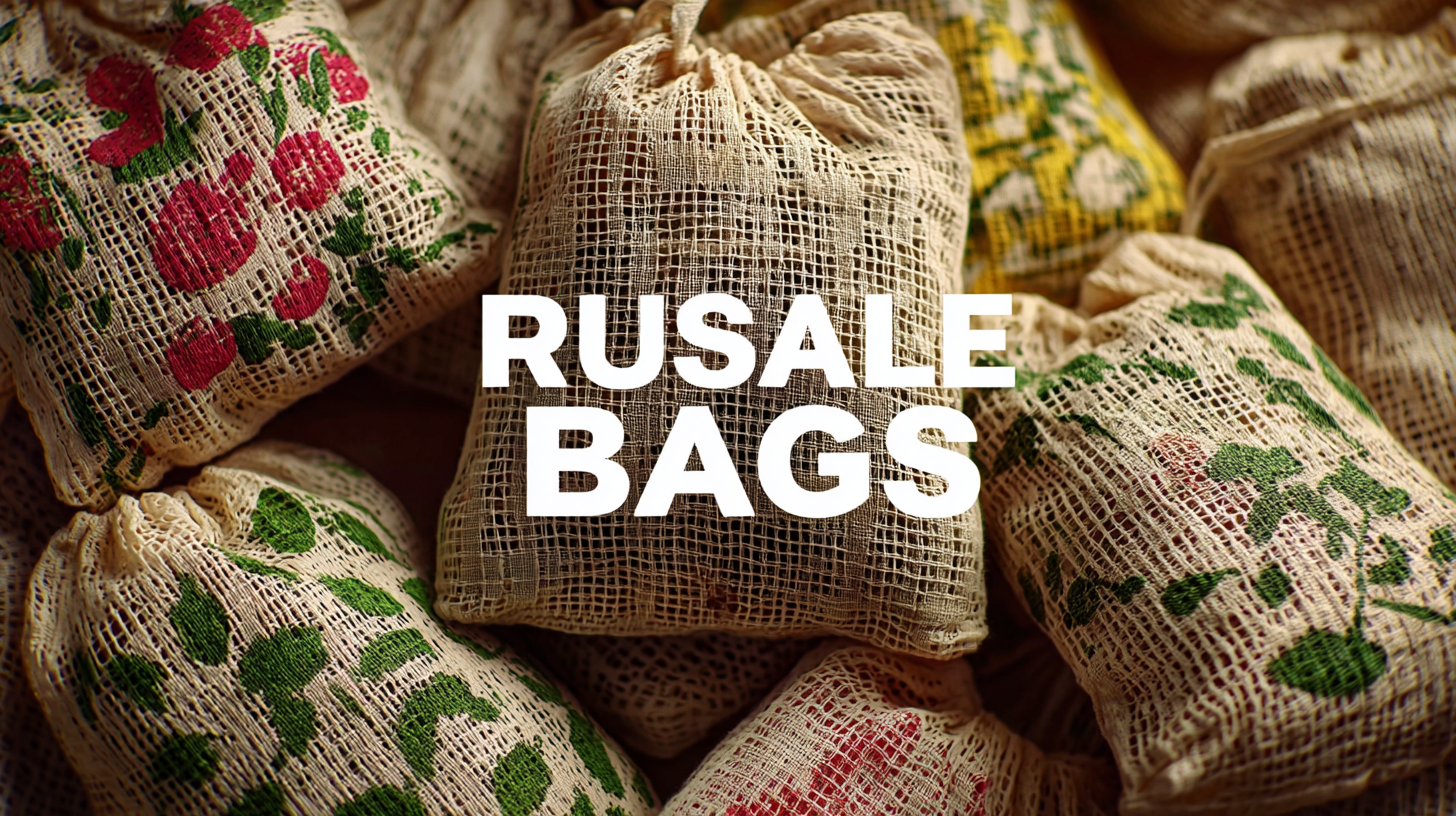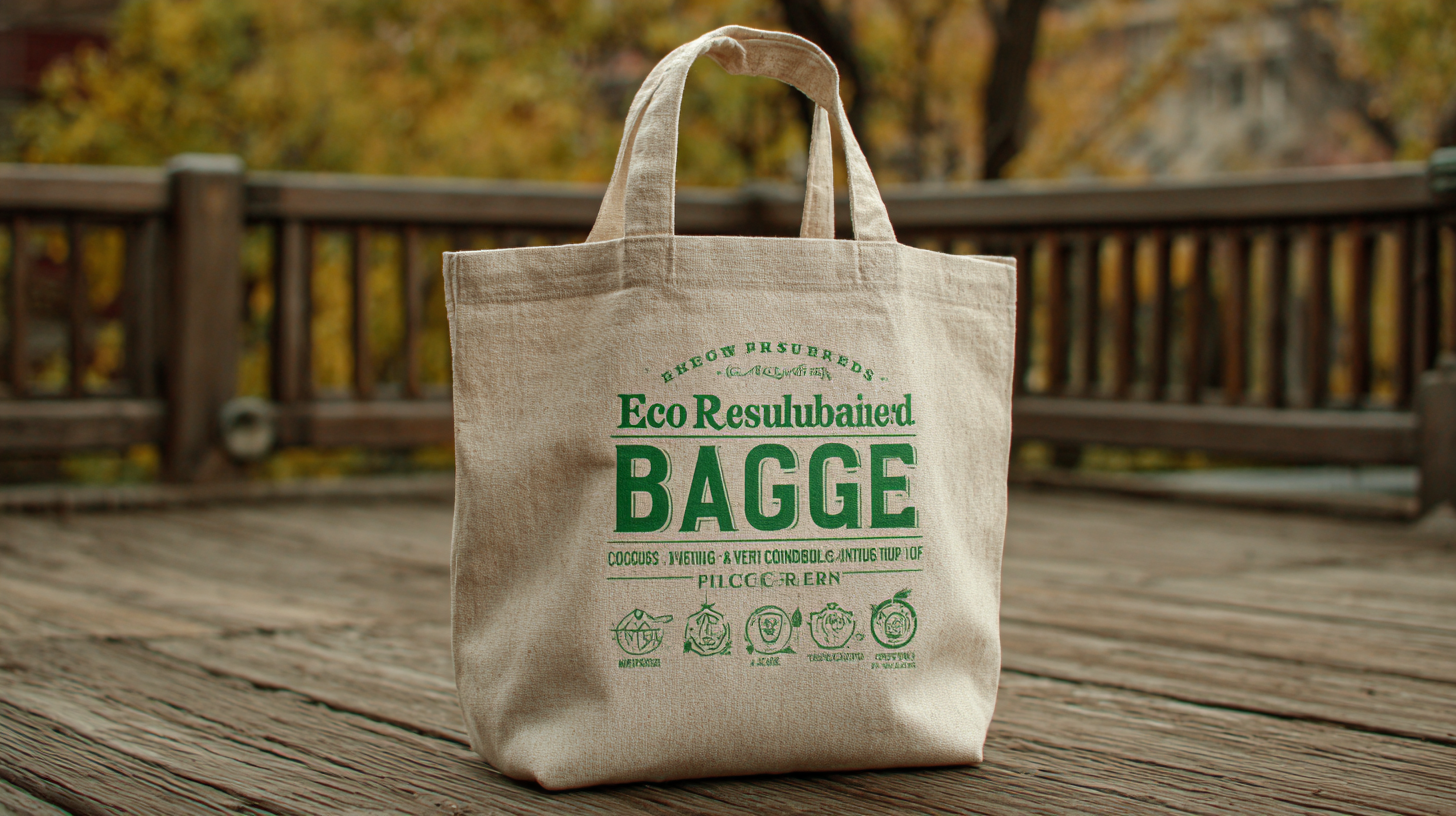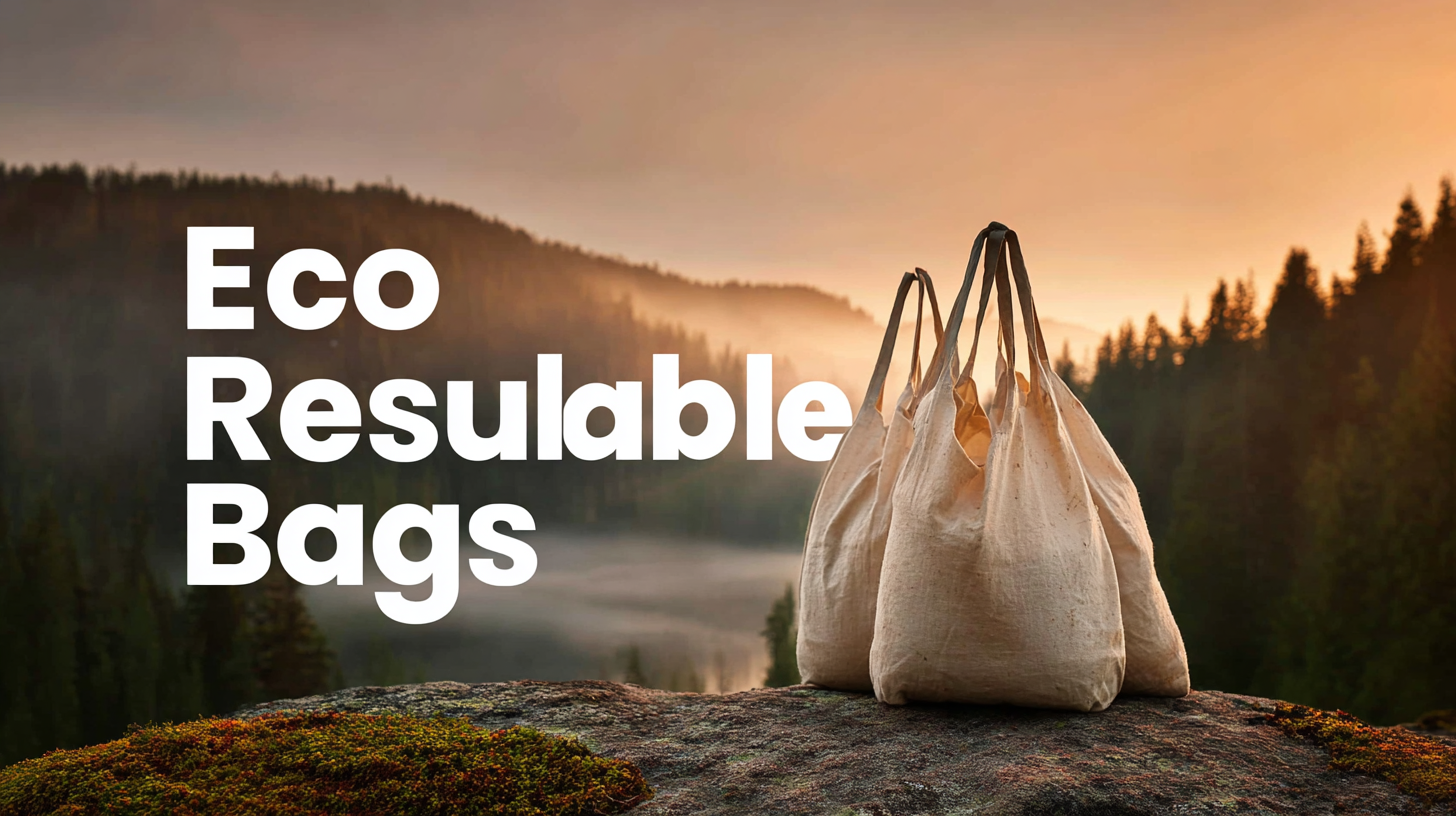 As we move towards a more sustainable future, the demand for
Eco Reusable Bags is at an all-time high. According to a recent report by Grand View Research, the global reusable bags market size was valued at approximately $9.3 billion in 2020 and is projected to expand at a compound annual growth rate (CAGR) of 6.0% from 2021 to 2028. This growth is fueled by increasing awareness of environmental issues and the detrimental effects of single-use plastics. Furthermore, technological advancements in materials and design are paving the way for innovative Eco Reusable Bags that not only meet consumers' needs but also exceed their expectations in functionality and sustainability.
As we move towards a more sustainable future, the demand for
Eco Reusable Bags is at an all-time high. According to a recent report by Grand View Research, the global reusable bags market size was valued at approximately $9.3 billion in 2020 and is projected to expand at a compound annual growth rate (CAGR) of 6.0% from 2021 to 2028. This growth is fueled by increasing awareness of environmental issues and the detrimental effects of single-use plastics. Furthermore, technological advancements in materials and design are paving the way for innovative Eco Reusable Bags that not only meet consumers' needs but also exceed their expectations in functionality and sustainability.
In this blog, we will explore the future of Eco Reusable Bags in 2025, focusing on how innovative technology is reshaping their development and the myriad benefits they offer in reducing waste and promoting eco-friendly practices.
As we look toward 2025, eco reusable bags are foreseen to experience a significant surge in popularity, driven by both environmental consciousness and innovative designs. The current market trends indicate a growing consumer preference for sustainable alternatives, which aligns with rising regulations against single-use plastics globally. Eco-friendly materials and production methods are no longer just an option; they are becoming a necessity in the retail landscape. Brands are beginning to invest heavily in research and development to create bags that are not only durable and stylish but also source sustainable materials that minimize environmental impact.
Projections for the coming years suggest that the eco reusable bag market will evolve with technological advancements that enhance utility and convenience. Features such as built-in RFID chips for tracking and smart material properties that adapt to weather conditions are paving the way for smarter bags. Moreover, the integration of biodegradable and compostable elements is expected to resonate with eco-conscious consumers seeking zero-waste solutions. As manufacturers continue to innovate, eco reusable bags are set to transform shopping habits while playing a crucial role in global sustainability efforts.

As we look towards 2025, the production of eco-friendly reusable bags is set to revolutionize with the integration of innovative materials.
Traditional fabrics like cotton and polyester have served us well, but advancements in material science are leading to new alternatives that could further enhance sustainability. Bio-based plastics derived from renewable resources, such as corn starch or sugarcane, are emerging as viable alternatives that can biodegrade more effectively than their petroleum-based counterparts. These materials not only reduce reliance on fossil fuels but also lower the overall carbon footprint associated with production.
Furthermore, the development of reinforced, lightweight materials is paving the way for reusable bags that are both durable and eco-conscious. Innovations such as recycled ocean plastics not only help clean our oceans but also transform waste into functional products. These cutting-edge materials possess unique properties, allowing bags to maintain their shape and strength, thus extending their lifespan and usability. By 2025, consumers can expect to see a diverse variety of reusable bags that are not only stylish but also align with their sustainability values, offering a perfect blend of functionality and environmental responsibility.
In 2025, the landscape of eco-friendly reusable bags is set to transform dramatically, thanks to groundbreaking technological advancements. These innovations will not only enhance the functionality of the bags but also promote sustainable practices among consumers.
 Imagine bags embedded with smart sensors that can track usage and monitor the condition of the bag. Users could receive notifications when their bag needs to be replaced or when they have exceeded their shopping capacity. This feature encourages mindful consumption and reduces waste, aligning perfectly with the eco-friendly ethos.
Imagine bags embedded with smart sensors that can track usage and monitor the condition of the bag. Users could receive notifications when their bag needs to be replaced or when they have exceeded their shopping capacity. This feature encourages mindful consumption and reduces waste, aligning perfectly with the eco-friendly ethos.
Moreover, the integration of solar-powered charging capabilities can lead to the development of bags that double as power banks for electronic devices. This means that while shopping, users can conveniently charge their phones or tablets, eliminating the need for single-use plastic chargers.
With customizable designs that include built-in pockets for groceries or tech gadgets, eco reusable bags will evolve into a multifunctional accessory that meets diverse consumer needs. These innovations represent a significant leap forward, merging sustainability with smart technology and setting new standards for eco-conscious living.
As we approach 2025, consumer preferences in the realm of eco-friendly products are evolving rapidly. The demand for reusable bags is no longer driven solely by environmental concerns but is increasingly shaped by convenience, design, and technology. Shoppers are leaning towards bags that not only minimize waste but also enhance their shopping experience. Features like collapsibility for easy storage, integrated insulation for food safety, and even built-in technology for tracking usage are becoming important selling points.
Moreover, the market is seeing a shift in buyer behavior as consumers prioritize brands that align with their values. Sustainability and transparency in production processes are paramount, leading to a preference for companies that showcase their commitment to eco-friendly practices. The rise of social media and influencer marketing has further amplified these changes, with eco-conscious trends spreading rapidly among younger demographics. By 2025, it is expected that companies will need to harness innovative technology to stay relevant, focusing on both functionality and the ethical implications of their products to meet the evolving expectations of conscientious consumers.
The adoption rates of eco-friendly bags are increasingly influenced by a complex web of regulations and policies put forth by governments worldwide. According to a report by the Global Market Insights, the reusable bags market is projected to see significant growth, reaching $14 billion by 2025. This uptick in market value is largely driven by stringent legislation aimed at combating plastic pollution. For instance, California's statewide ban on single-use plastic bags led to a 72% reduction in plastic bag consumption within a year, demonstrating the power of policy in shifting consumer behavior towards more sustainable options.
Additionally, countries like the European Union have enacted comprehensive directives that promote the use of biodegradable and reusable bags, further accelerating adoption rates. A study by McKinsey & Company indicates that regions with robust regulatory frameworks witness a 15-20% higher utilization of eco-friendly bags compared to those without such policies. As companies strive to align with these regulations, innovative technologies are emerging to create more versatile and durable alternatives, ensuring that eco-friendly options will not only meet consumer needs but also comply with enhanced environmental standards.